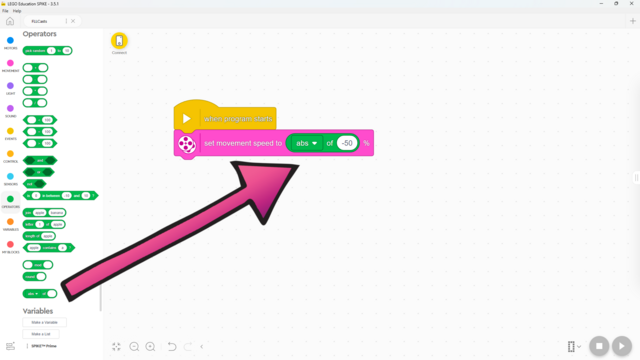

How to use Absolute Value in LEGO SPIKE Prime Word Blocks Software
It is part of the Functions block, but what does it do?
- #2509
- 16 Sep 2025
This page shows all the robotics tutorials listed without specific grouping. Each tutorial is short, on specific topic, has a video. Tutorials are structured in sequence in Courses.


It is part of the Functions block, but what does it do?


Due to the long construction, you need to be careful with time in this lesson. Don’t let the students spend too much time building. If you think you can manage it, you may let them find their own sheet music and adapt it, but we recommend sticking to the short section from Ode to Joy as shown in the tutorial. This melody also serves as preparation for the next lesson, where a ready melody will again be needed. Here’s what the program looks like:
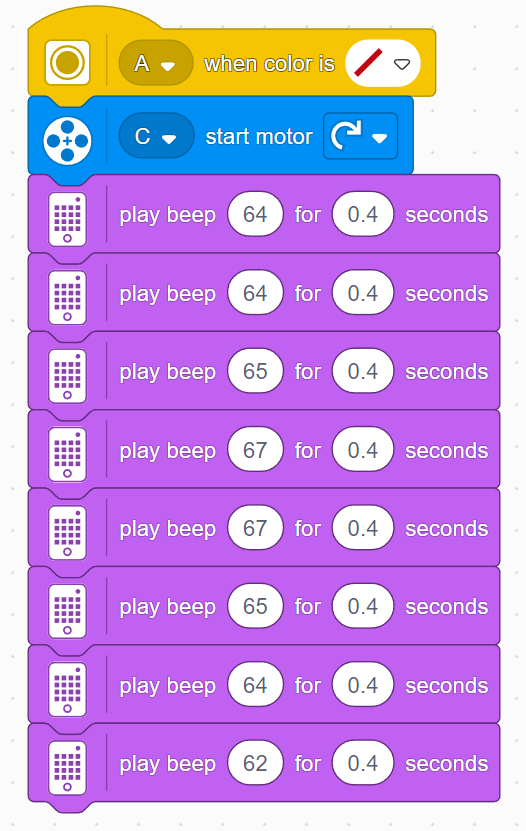


Because this is the musical level, it’s important to set some rules for the sounds the robots make. Students often don’t realize how loud it can get, so remind them to keep the volume lower so they can hear the hubs, and to stop their programs in time, since continuous sounds can become quite loud.
In this lesson, students will learn many of the key concepts needed for the rest of the course. That’s why there is little construction and mainly exploration with a single force sensor. Make sure they understand the difference between pitch and volume. Although there are many new blocks introduced, they are mostly simple and similar to previous ones. These blocks will also be used in many future lessons, giving students plenty of time to become familiar with them. By the end of the lesson, students should have tried the following two programs:
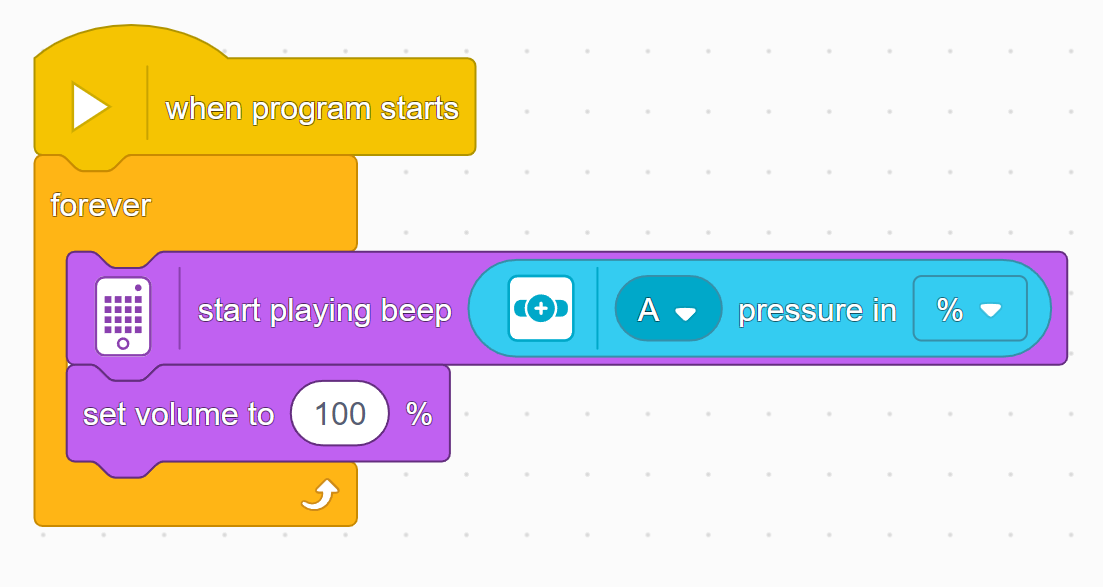
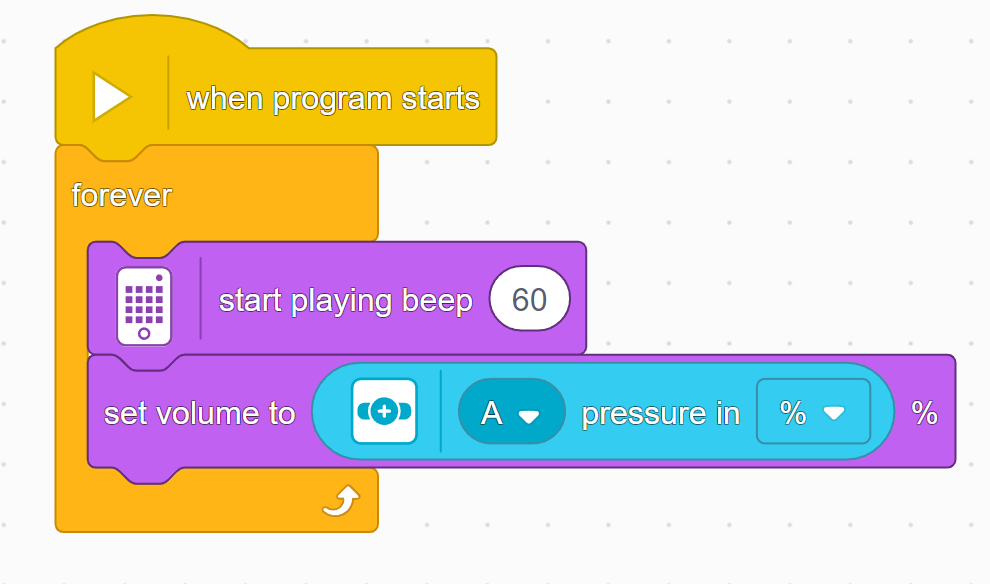
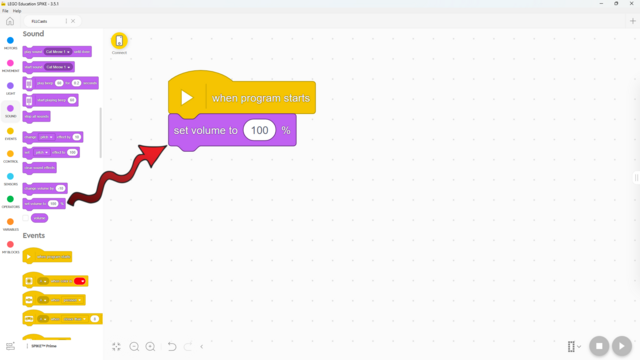

A big part of a sound is its volume. Here's how to change it!
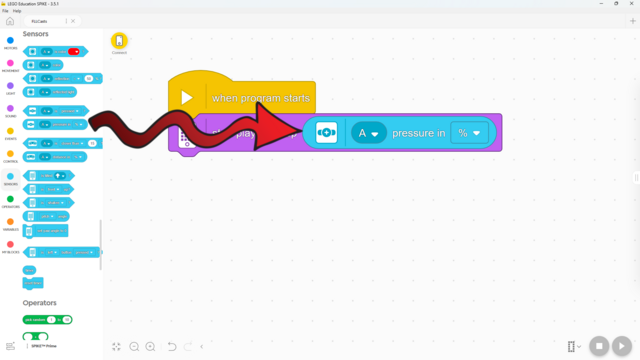

The force sensor can detect how hard it’s being pressed! Here’s how:
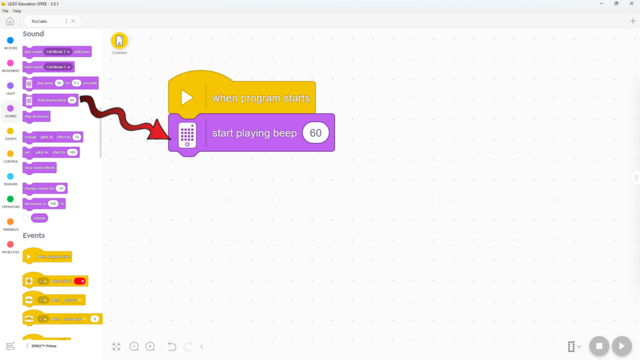

Did you know that your hub can play a sound? Here's how!
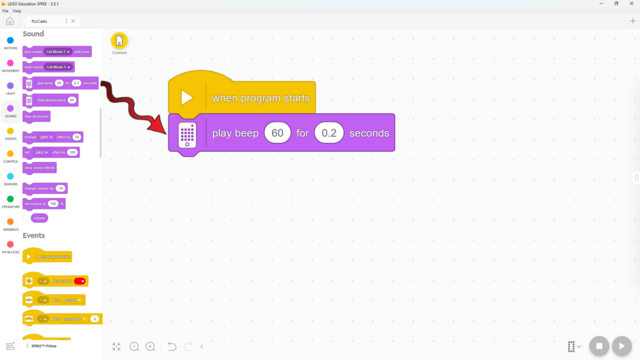

Did you know that your hub can play a sound? Here's how!
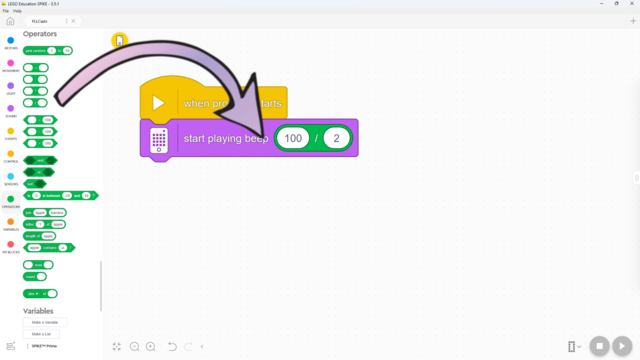

You already know how to do division in mathematics - here’s how to do it in SPIKE Prime!
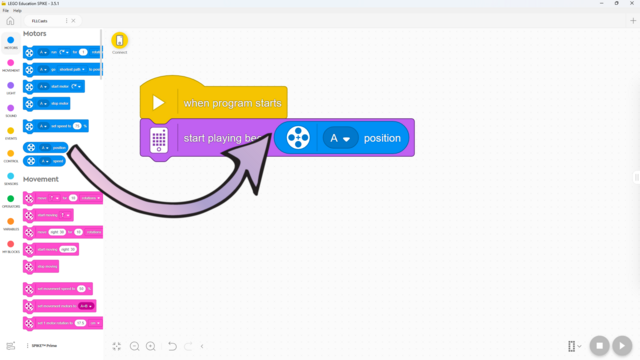

Did you know you can use the motors as sensors? Here's how!
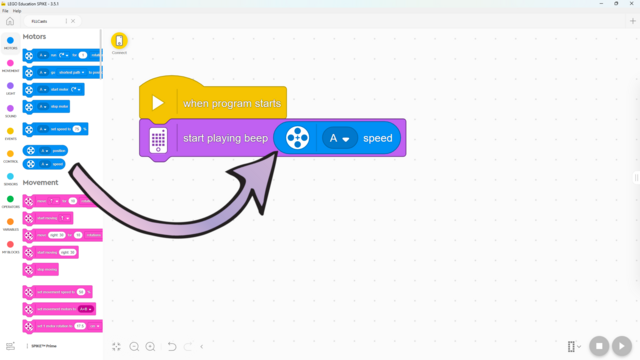

Did you know you can use the motors as sensors? Here's how!
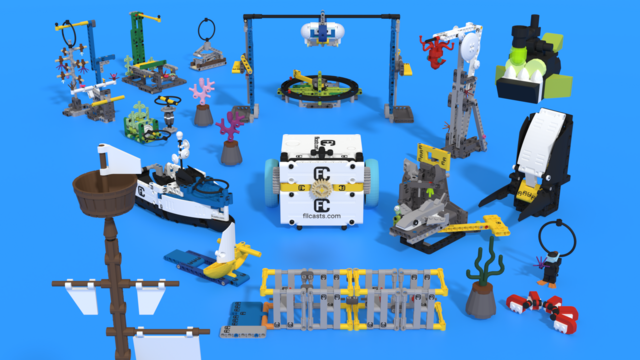

In this video tutorial, we demonstrate a full run for the FIRST LEGO League 2024-2025 SUBMERGED challenge, completing all missions in a single sequence. Each mission is shown individually beforehand, with close-up views of how the attachments work and the principles behind their design. All attachments are pinless, making them quick to change during the run, though aligning and loading the robot still requires practice. The strategy involves moving from one base to the other while accomplishing as many missions as possible, including retrying those close to base when needed.
While the complete run takes longer than the official 2.5 minutes, the focus here is on demonstrating reliability, consistency, and the trade-offs between time and scoring points. In some cases, missions are skipped to focus on higher-value tasks, but in this run, we aim to complete them all. The result is a strong performance that comes close to the maximum possible score.
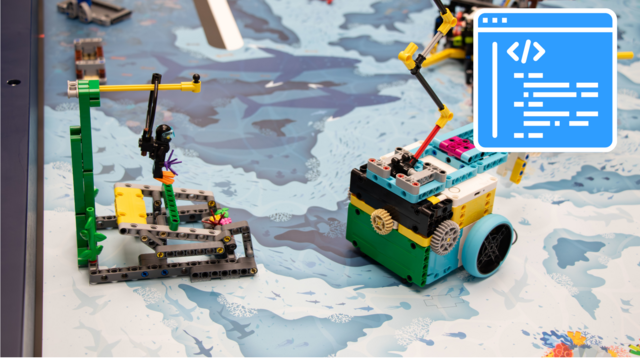

The programming process for accomplishing M01 Coral Nursery, M02 Shark, M03 Coral Reef, and M04 Scuba Diver of the FIRST LEGO League 2024-2025 SUBMERGED Challenge is straightforward, despite covering multiple missions in one run. Each mission is accomplished with a simple and reliable approach that minimizes the impact on overall run accuracy.
The code consists mainly of movement blocks and gyro turns, allowing for consistent navigation between mission models. By keeping the programming uncomplicated, the robot can perform pushing, collecting, and delivering tasks efficiently without introducing unnecessary complexity, ensuring a smooth and dependable multi-mission run.
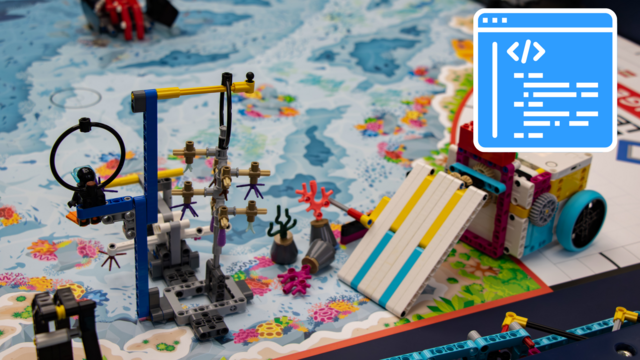

The programming process for accomplishing M01 Coral Nursery and M03 Coral Reef of the FIRST LEGO League 2024-2025 SUBMERGED Challenge is straightforward, focusing on controlled movement and stability. The motor-powered attachment lifts the coral tree smoothly to the coral tree support while also delivering reef segments outside the launch area.
The robot moves forward to position itself, raises the coral tree, and then returns to base. To ensure the reef segments remain secure during the run, the program uses slow acceleration and reduced speed when needed. This simple yet reliable approach keeps the sequence easy to execute while maintaining consistency in performance.
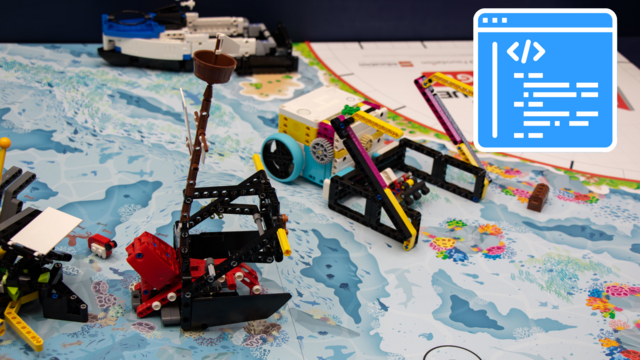

The programming process for accomplishing M06 Raise the Mast and M07 Kraken’s Treasure of the FIRST LEGO League 2024-2025 SUBMERGED Challenge is streamlined, focusing on controlled movement and precision. The design of the attachment ensures that the mast is lifted to the correct height while the treasure chest is securely captured.
The code uses simple maneuvering to reach the mission model, but the return path requires special handling. If the robot makes a sharp turn, the chest can be lost, so the program uses light steering to maintain stability while returning to base. This combination of straightforward navigation and careful return control ensures consistent success for both missions in a single run.
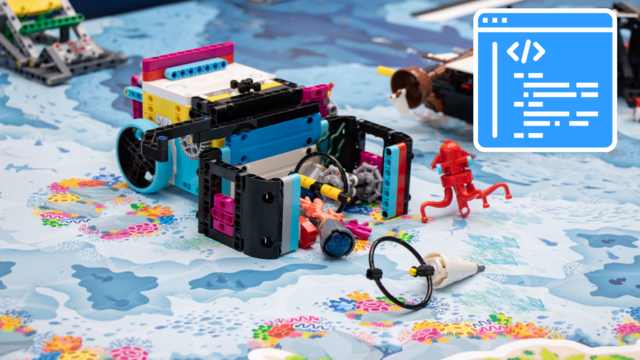

The programming process for accomplishing M05 Angler Fish, M09 Unexpected Encounter, M14 Sample Collection, M12 Feed the Whale, and M03 Coral Reef of the FIRST LEGO League 2024-2025 SUBMERGED Challenge is streamlined, making it easier to manage even in a large multi-mission run. The design of the two-part attachment system significantly influences how the robot moves, simplifying the code and reducing complexity.
The program is surprisingly simple for such a comprehensive run, with the robot performing a series of maneuvers to collect, deliver, and push mission elements. For maximum accuracy, it uses gyro turns, slow acceleration, and reduced speed in trickier spots to maintain control. By letting the attachments guide much of the interaction, the programming remains clean and reliable, enabling the robot to handle multiple scoring tasks efficiently in a single trip.
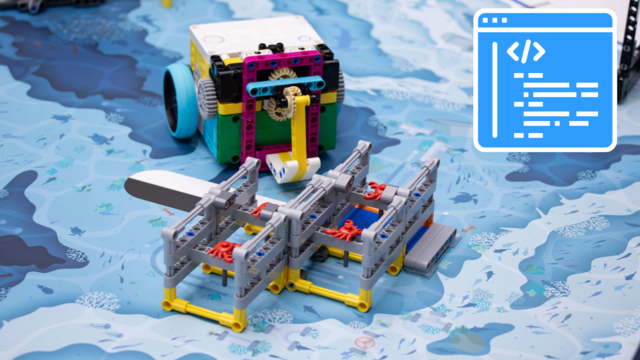

This programming tutorial focuses on accomplishing M8 Artificial Habitat of the FIRST LEGO League 2024-2025 SUBMERGED Challenge using the Nautiq box robot (a LEGO Education SPIKE Prime robot).
The sequence is optimized to position all four crabs upright with their yellow bases touching the mat for maximum points. The code uses straightforward but highly accurate movement commands, ensuring the robot engages and adjusts the mission model with precision. This dedicated program minimizes errors and allows for consistent high-scoring runs, combining efficient programming with the attachment’s reliable design.
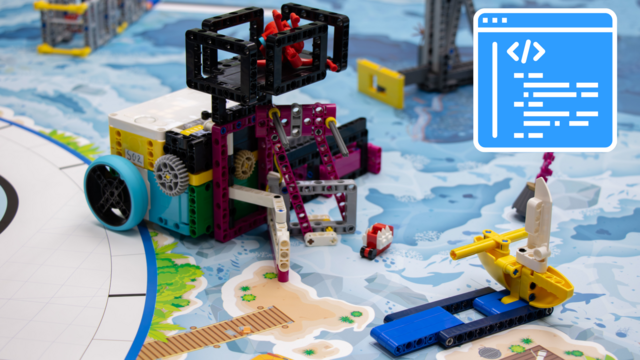

Тhe programming process is streamlined, making it more accessible even for beginners. The design of the attachment significantly influences how the robot moves, simplifying the code and reducing complexity.
The program is way easier due to the form of the attachment that makes the first movement just forward to complete M13 Change Shipping Lanes, and then moving backwards towards M09 Unexpected Encounter. This approach eliminates the need for complex directional adjustments at the start, allowing the programmer to focus on precise positioning later in the sequence. By letting the attachment dictate the natural forward motion initially, the programming logic becomes shorter, cleaner, and easier to debug. As a result, both the initial movement and the reverse action toward M09 can be executed with minimal code changes, ensuring faster development and more reliable performance. Along the way, the robot also partially accomplishes M12 Feed the Whale.
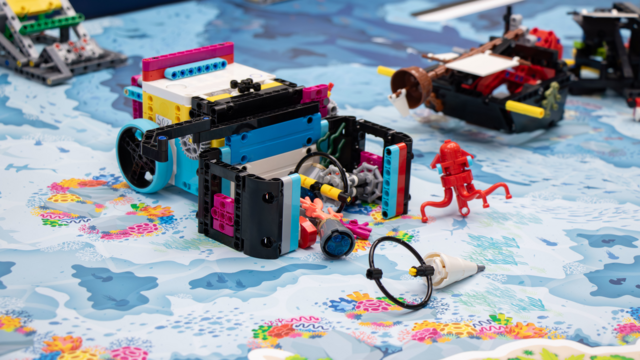

This video tutorial focuses on solving M05, M09, collecting samples for M14, 3 Krill for M12, and Reef Segments for M03 of the FIRST LEGO League 2024-2025 SUBMERGED Challenge using Nautiq box robot (a LEGO Education SPIKE Prime robot).
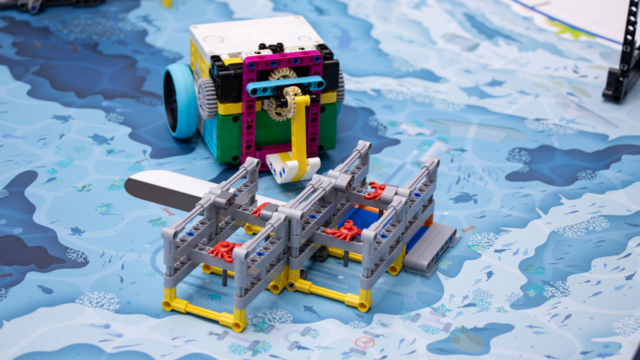

This video tutorial focuses on accomplishing M8 Artificial Habitat of the FIRST LEGO League 2024-2025 SUBMERGED Challenge using the Nautiq box robot (a LEGO Education SPIKE Prime robot). The run uses a simple active pinless attachment mounted at the front of the robot, designed for precise engagement with the mission model.
The goal is to position all four crabs upright with their yellow bases touching the mat for maximum points, a task requiring careful alignment and controlled movements. While it is possible to complete the mission with fewer crabs upright, this run is programmed for the full score, using dedicated movement commands in a separate run for maximum accuracy. This approach combines a reliable mechanical design with precise navigation to meet the mission’s demanding scoring conditions.
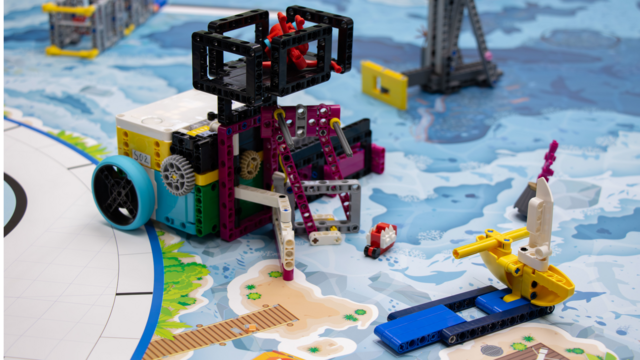

This video tutorial focuses on accomplishing M13 Change Shipping Lanes, and partially M09 Unexpected Encounter and M12 Feed the Whale of the FIRST LEGO League 2024-2025 SUBMERGED Challenge using the Nautiq box robot (a LEGO Education SPIKE Prime robot).
In this run, the robot flips the shipping lane model, collects the small Krill, and retrieves the Unknown Creature from the field by pushing on the mission model. These tasks are executed with precision to ensure that the robot not only scores the primary mission points but also safely returns the collected elements back to base. The sequence is optimized to minimize travel time between missions while maintaining accuracy and control over the robot’s attachments.
We use a pinless, three-in-one design attachment for completing multiple missions in one run. At the front, an angled rubber band mechanism handles M13 Change Shipping Lanes, allowing the robot to launch straight from base without extra positioning.
On one side, a passive curtain mechanism like a cage captures the single Krill for M12 Feed the Whale. On top, a secure basket catches the Unknown Creature from M09 Unexpected Encounter after a push with the robot’s back. The attachment is optimized for quick and reliable mission execution without additional motors.
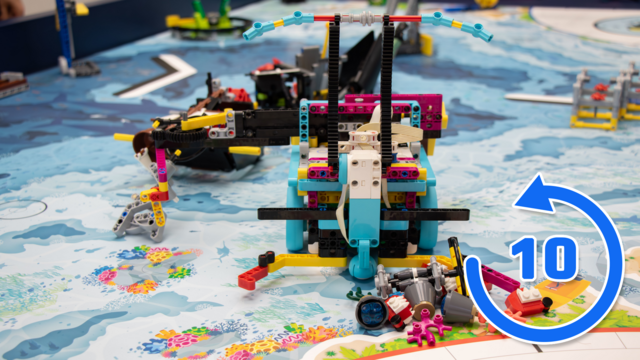

This 10 out of 10 video tutorial focuses on the flawless accomplishment of M05 Angler Fish, M09 Unexpected Encounter, M10 Send over the Submersible, and M11 Sonar Discovery of the FIRST LEGO League 2024-2025 SUBMERGED Challenge using the Nautiq box robot.
The run uses a combination of aligning, front, and back attachments to execute multiple tasks in one run, including a rotation transfer system using a single long axle for M11, early execution of M10 for a strategic edge, and sensor-based alignment for precision. Despite the reduced per-run accuracy due to the mission count, this method ensures that when the run works, it secures an exceptionally high score.
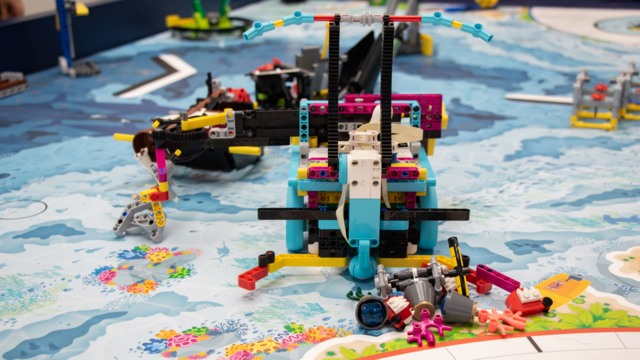

This video tutorial focuses on accomplishing M05 Angler Fish, M09 Unexpected Encounter, M10 Send over the Submersible, and M11 Sonar Discovery of the FIRST LEGO League 2024-2025 SUBMERGED Challenge using the Nautiq box robot (a LEGO Education SPIKE Prime robot). The run uses three attachments in sequence: an aligning attachment at the start to reduce initial inaccuracies, a front attachment for solving M05 and M10 while collecting krill, reef segments, and the water sample, and a back attachment for solving M11, delivering the unknown creature for M09, and collecting plankton and seabed samples.
The front attachment is particularly interesting in this configuration because it integrates two color sensors and one motor directly onto the attachment itself. These sensors are used to align the robot to the black line near M10, while the aligning attachment at the start ensures a precise launch position.
This version of the big run takes on significantly more missions in a single attempt than a standard sequence, which naturally comes at the cost of reduced accuracy. In the current FLL competition format—where only your best score from three attempts is counted—this trade-off can be highly strategic. A run that works perfectly even just once can yield a massive point boost, making this kind of high-reward, lower-consistency approach a potential game-changer for teams willing to take the risk.